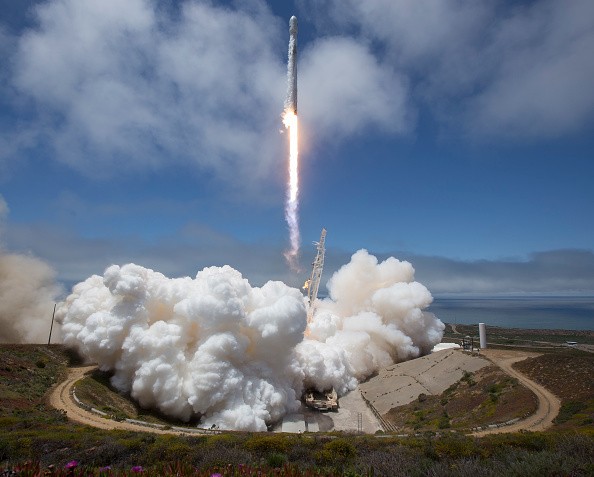As SpaceX prepares to launch its next batch of Starlink broadband satellites on Tuesday, August 18, the world awaits whether the space company will be setting new records.
The latest set of Starlink satellites will be brought to Earth's orbit with help from their Falcon 9 booster. It will be the newest installment of the SpaceX Starlink project - a satellite constellation that aims to provide satellite Internet access.

SpaceX Setting New Records
The Falcon 9, serial number B-1049, is a reusable two-stage rocket designed and built by SpaceX precisely to transport people and payload to Earth orbit and more. It is well-known as the first orbital-class reusable rocket, standing at close to 230 feet and weighing 8,860 lb.
Falcon 9 has previously carried Starlink satellite components on three previous missions. The reusable rocket has also participated in two commercial satellite delivery gigs, bringing its prior mission total to five flights. Its upcoming Tuesday flight will be its sixth mission, setting a new record for the most missions made by a single orbital rocket.
Once Falcon 9 makes its sixth launch, it will later move to its paired sixth landing attempt. SpaceX will try landing the reusable rocket on the autonomous spaceport drone ship, Of Course I Still Love You, somewhere in the Atlantic Ocean.
SpaceX founder Elon Musk took to Twitter to announce the upcoming achievements for the space company. "Some big milestones coming up," Musk wrote. He was most likely referring to the sixth Falcon 9 flight, as well as another milestone for the company.
Some big milestones coming up https://t.co/K3v3yddg6J — Elon Musk (@elonmusk) August 17, 2020
The upcoming Starlink mission also marks the 100th SpaceX mission since it was founded back in 2002. Among the company's 18-year history, SpaceX managed to fly the Dragon cargo spacecraft. Among its recent milestones include the recently-completed Crew Dragon Demo-2 space flight and successfully testing its Starship SN5, completing a 150m hop.
RELATED: SpaceX Crew Dragon Undocks From the ISS
Launch Details
SpaceX is scheduled to launch its latest Starlink mission on Tuesday morning, August 18, at around 7:31 AM Pacific Time. Falcon 9 will take off from Cape Canaveral Air Force Station in Florida. According to the launch mission execution forecast last Monday, August 17, the weather remains at an 80 percent chance of being favorable for launch.
Aside from the sixth Falcon 9 mission and SpaceX's 100th mission overall, Elon Musk's space company will also attempt to catch both halves of the nose cone. This will initially protect the 58 Starlink satellites, plus three more from Planet, the American private Earth-imaging company.
In terms of component retrieval, SpaceX has recently proved their capability after a Falcon 9 rocket carried the South Korean military satellite Anasis-II. The July 2020 mission also made headlines for posting the shortest turnaround time as well as capturing both fairing halves protecting the South Korean payload, marking the first time it was successfully done.
RELATED: Missed Falcon 9's Launch Last Month? Catch SpaceX's 10th Batch of Starlink Satellites
The August 18 mission will be the 11th batch of Starlink satellites, following the last one last August 7. After this mission, the next schedule is in September.
Targeting Tuesday, August 18 at 10:31 a.m. EDT for Falcon 9's launch from Space Launch Complex 40 in Florida of 58 Starlink satellites and 3 @planetlabs spacecraft — SpaceX (@SpaceX) August 17, 2020
Check out more news and information on SpaceX on Science Times.
© 2025 ScienceTimes.com All rights reserved. Do not reproduce without permission. The window to the world of Science Times.











